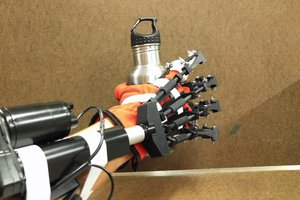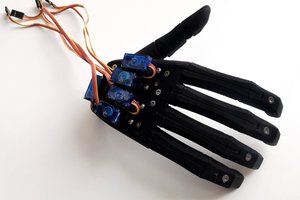The main characteristics/ goal for this project as follows:
1. More lightweight than commercial hobby glider , not weigh more than 10-12oz.
2. Inexpensive to build.
3. Smallest frontal area possible for minimized theoretical aerodynamic drag.
4. Operational without external thrust.
5. Wingspan less than 3'.
Initial build
Initially the glider was composed with 3d printed airfoil sectioned frame for the main wing, but was later scrapped because of the lack of rigidity in the film that I used. Spar for the main wing was of cable cover rod. I concluded that the sophisticated build was unnecessarily overweight and it was also a pain to attach both wings to the fuselage.
Airfoil design and of choice
Out of the many airfoil I have researched on, I decided on adapting the Eppler's E544 17.5% General Aviation as the airfoil of my main wing. 3D printed structure does not conform to sharp edges and hence the edges were translated into 50 micron thick/width squarish corners. Before printing the airfoil, goal number 1 remains priority. The airfoil is laid on its side to be printed on one side and hence, there is no top layer.
However, soon after initial testing with the film covered wing, it was clear that the film did not hold up the wing as expected. A new wing design is to come up with. Credits to Flitetest, I based my wing and other designs on the FT Simple Soarer. I wasn't clear what airfoil they used and it was better to be engineering the wing as much as possible rather than solely trial and error. Hence, I stumbled upon Aquila 9.3% smoothed for the spar build coordinates and Clark Y for the flat bottom. E432 was possible but the curled trailing edge wasn't possible for foam build.
I always wanted a V tail and it seemed attractive to integrate only 2 servos for the control as well as only 2 rudder-vator needed for the tail. I wanted more flat surface as possible for maximum glide ratio as well as yaw stability. A conventional tail design was chosen with higher AR for length to area.
Fuselage
Perhaps this took a lot of time to figure out as I was trying to use as little material as possible for weight. First was the cable cover for the rear fuselage as I did not have enough money for a rigid carbon fiber rod. The cover rod wasn't rigid and tend to twist, no good for winds and external forces coming in from the servos. Scrapped again.
The rod weighed 12g. Front foam fuselage theoretically, weighs about 2.8g. ~15g approximated.
i decided to go with the all foam fuselage instead. It was calculated that the fuselage should weigh about 9.73g. Well.... obviously...
Control System
I created an app. For my $28 Kindle. Of course, with the help of App Inventor. The app sends signals to the TX and relayed to the RX on the plane. Arduino micros were used in this making. I wanted to use a nano or ATTiny but nano was too heavy and ATTiny85 was not worth the extra build for the FTDI and PCB. Micro it is, cheap and cheerful.
For improvement in aesthetics, I would design a PCB to receive signals from the audio jack, and amplified using an op-amp.
Antenna. Dipole no doubt. Monopole and helical is fine but range safety factor was a top priority for me. No Yagis here, please. Not yet.
Initial testing includes 2 channel control system, yaw and pitch.
I'll keep the cool stuff for later.
Thrust system
I could get a propeller for cheap but I wanted to design my own. E854 13.41% was what I had chosen initially and I tested it our. Diameter was 14cm. Eliptical. Pitch was 25degrees. It worked okay.
2nd iteration was worth mentioning. Diameter at 12cm, eliptical at 35 degrees pitch. I used the propeller on my 180 motor salvaged from a toy fan. Interestingly, high amplitude resonance was observed during initial power on and off. The angular frequency of the propeller was nearing its natural frequency.
Next steps
1. Dihedral wings extension for extra lift while keeping the L/D high.
2. FPV/...

 Chad Paik
Chad Paik
 Supercell
Supercell
 Bree Hoffman
Bree Hoffman